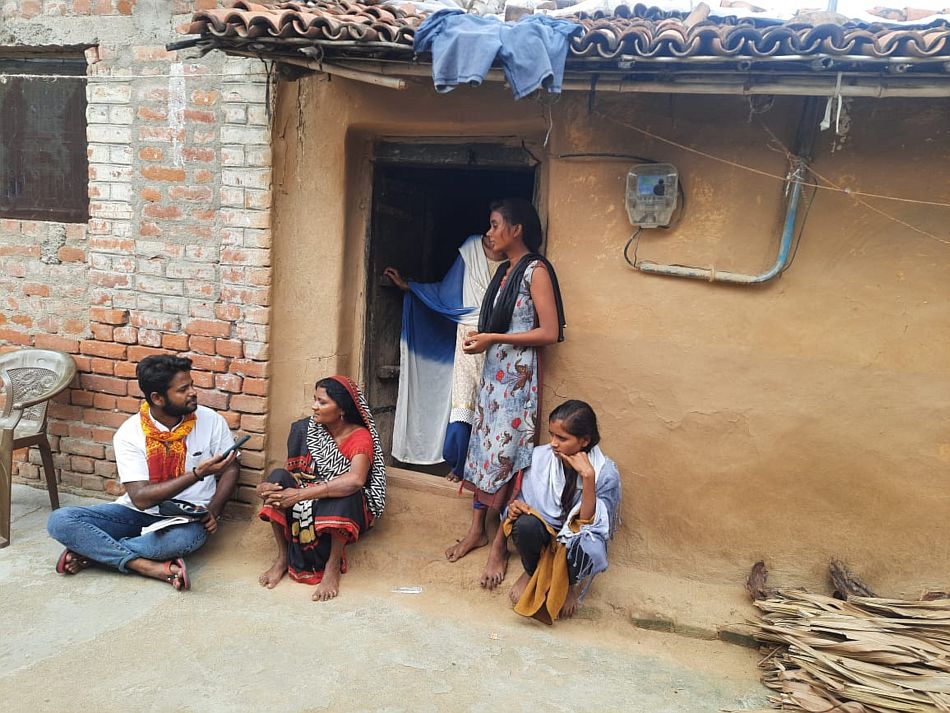Understanding the layers of inequality in agriculture
By Deepa Joshi, Meghajit Sharma Shijagurumayum, Meera Bisht, Upandha Udalagama and Sahara Basnet, IWMI

Officially, Kavita Devi would not count as landless. Even though she belongs to a land-owning family, in practice, she is landless. These intra-household gender-generational granularities are not accounted for in official statistics of landless rural families in Bihar who make for over 60% of the state’s population, of which, over 92% are from Backward Caste groups (namely the Other Backward Castes, the Scheduled Castes, and the Scheduled Tribes), Scheduled Castes and Dalit households. With only 18.9% of Bihar’s landowner households being headed by women (compared to 87.9% of male-headed landowner households), the opportunities for women to pursue and meaningfully benefit from agriculture-related livelihood opportunities is slim.
Bihar is historically known for male out-migration from agriculture, across class and caste groups. There is increasing evidence that climate impacts have exacerbated male out-migration. This has increased the involvement of women, particularly for marginalized low-caste women in the informal agricultural workforce, including women like Kavita Devi, who has chosen to actively practice farming through a centuries old practice of sharecropping, known as ‘batai.’ Batai is an unofficial arrangement between a tenant farmer and a landlord, and although well known to be exploitative, it is often the only option for landless and smallholder farmers to pursue productive agriculture. Tenant farmers are required to pay varied amounts and types of input costs, such as fertilizer, irrigation, seeds, labor, and equipment usage, as well as provide the landlord half of the harvest crop or its equivalent monetary worth.
Women confront even greater challenges as tenant farmers. Kavita Devi explains, “The landlord contributes half the amount of cash for the fertilizers, seeds, and pesticides, but he rarely does this in time, which affects the production. I have to request the landlord several times for the money. Sometimes, they decline or change their mind, and I bear the entire input costs by taking a loan. Also, I am expected to pay for the use of irrigation pumps, labor, ploughing and water use, which is becoming increasingly expensive.”
For the reasons discussed below, climate impacts and the loss of crops is debilitating for women tenant farmers like Nandi Kumari, a scheduled caste woman who has been consistently experiencing crop losses. “This year, my crops rotted because of water logging. A year before, hailstorms destroyed cucumber, taro, and other vegetables that I was growing,” she says.
To further understand the gendered dynamics of agriculture for marginalized women, the Doing Science With Society’ (DSWS) research project applied a transdisciplinary, ethnographic digital tool called Sensemaker. This tool helped reveal the gendered dimensions of everyday experiences of exclusions, climate vulnerabilities and resilience among marginalized communities, groups and women. The DSWS project aims to unpack the complexity of climate challenges in the face of multidimensional inequalities to help design program interventions that tackle latent and blatant gender norms, biases and gender-power hierarchies.
Sensemaker has recorded 597 responses of how diverse groups of female and male farmers experience impacts of climate change. Our analyses to date show that, for the most marginalized, climate change exacerbates already challenging economic and social disparities. Such inequalities further deepen when gender is crosscut by caste and poverty.
Our research shows that extreme weather events such as untimely rains (23.20%), droughts (21.70%), and hailstorms (7.20%) are increasingly posing major challenges to agriculture in Bihar, such as financial insecurities. As a coping strategy, many farmers have opted for loans from formal and informal sources. According to data gathered by the Ministry of Agriculture and Farmer Welfare, there was a 122% increase in loanee farmer applications between 2018 and 2022. However, the most vulnerable do not have access to formal loans, and tend to be trapped in a cycle of long-term high-interest debts to local money lenders. Out of the 597 respondents we interviewed, 53.5% of farmers report having one or more unpaid debts. Those who struggle most with debts are women tenant farmers from “lower” caste families, who also have to pay back to their landlords, in addition to meeting family sustenance needs.
Multidimensional and intersectional marginalization that reiterate old challenges in the face of new climate impacts is poorly understood and addressed in official and non-governmental programs. Marginalized women, who are increasingly being left to become primary farmers, have little or no access to assets, resources, information, agricultural technology, credit, access to infrastructure and agricultural services. The most marginalized, for example, landless, poor lower caste women – are also least likely to benefit from institutional support for climate mitigation programs and interventions.
Building climate resilience requires attention to the complexities and intersectionality of inequalities – which prevail in households, at the community, and in how these complexities are invisible to the mostly male institutional actors. Narratives of women as vulnerable, or homogenous groups of women ready to benefit from climate interventions do not reflect the ground realities of women like Nandi and Kavita, whose relationship with agriculture is governed by gender, caste, age/status and poverty. Further, there is an urgent need to address biases and blind spots in policies and institutional structures and cultures – so that there is more clarity and visibility on the intersectionality of climate vulnerabilities and disparities.
Names of all respondents in this article have been anonymized.

